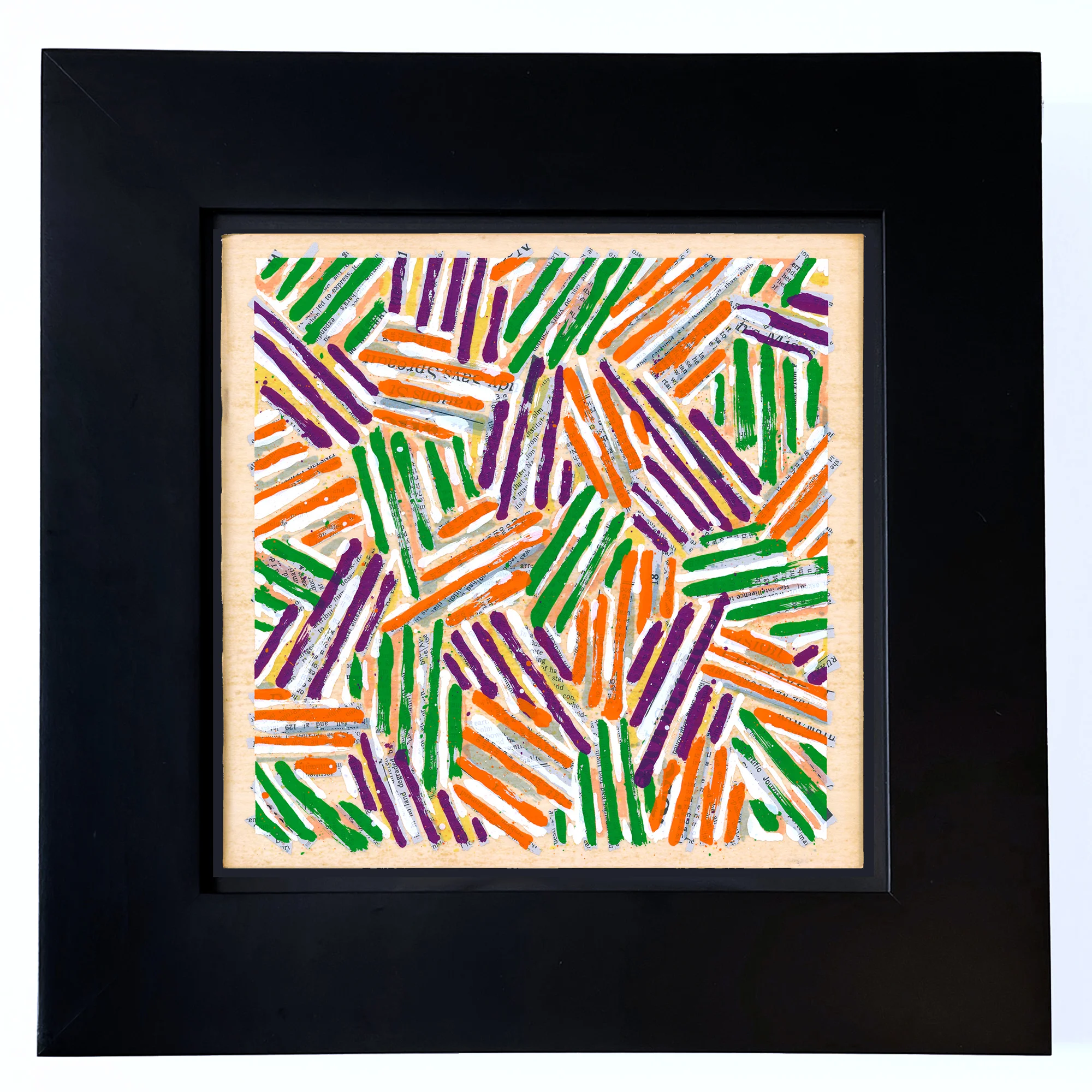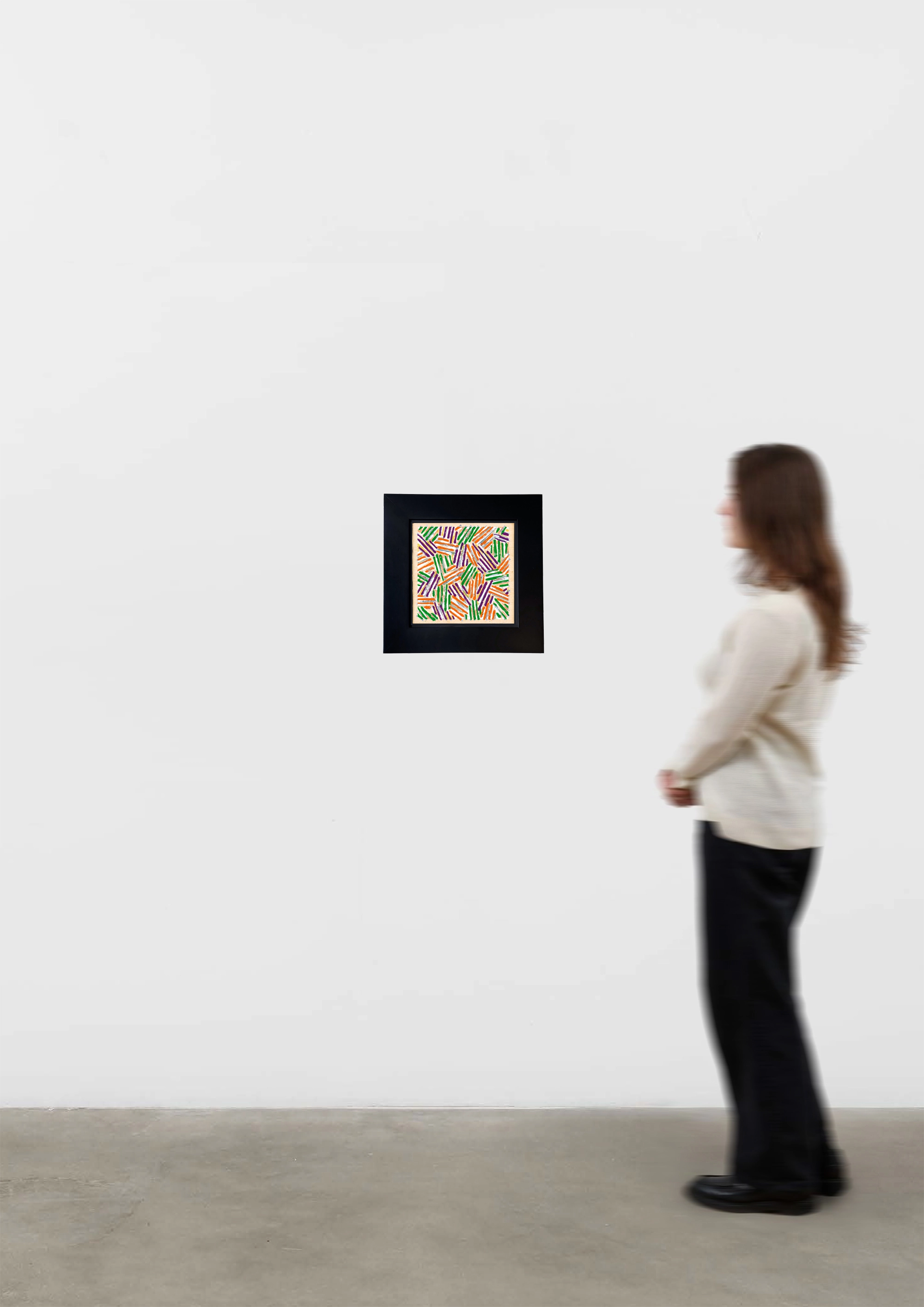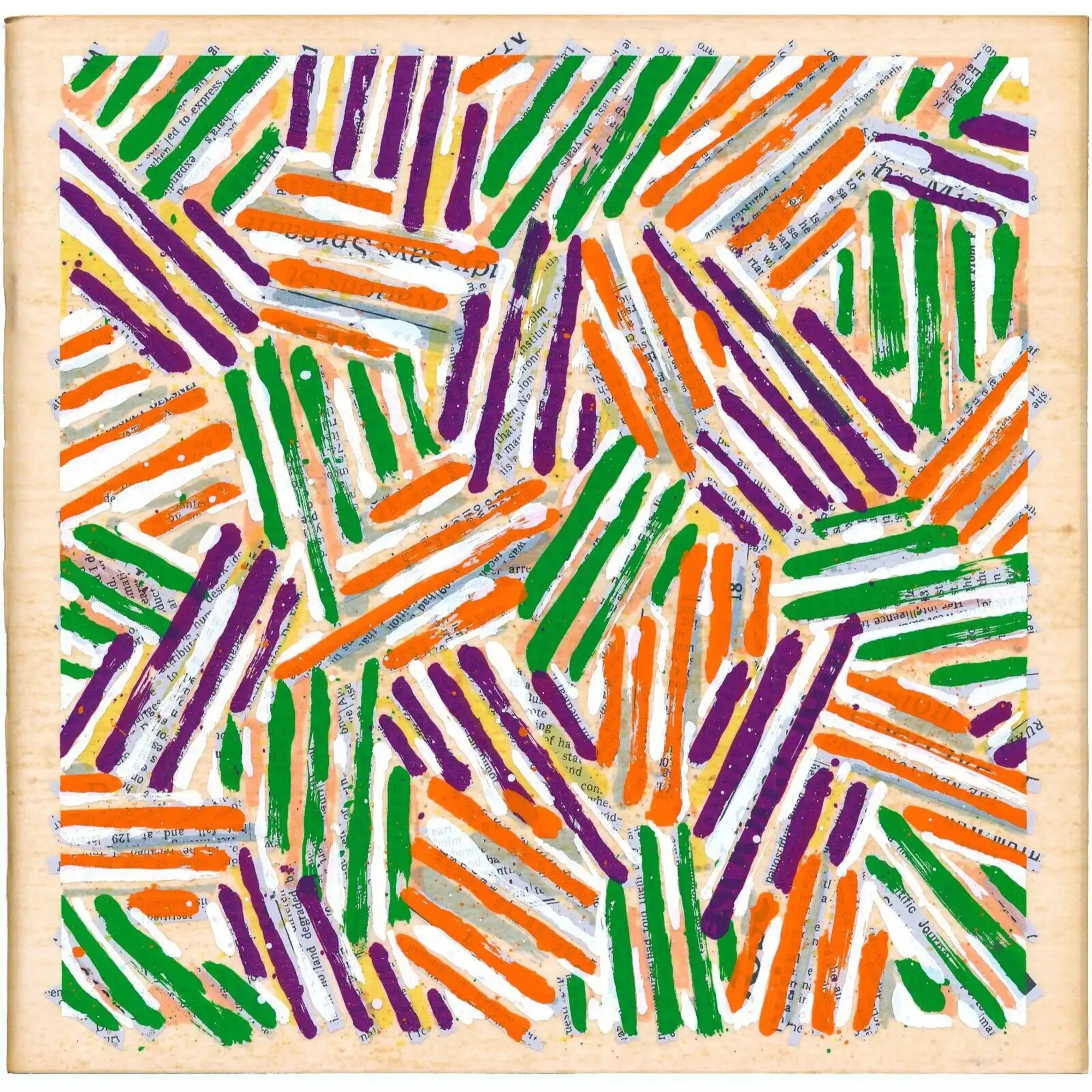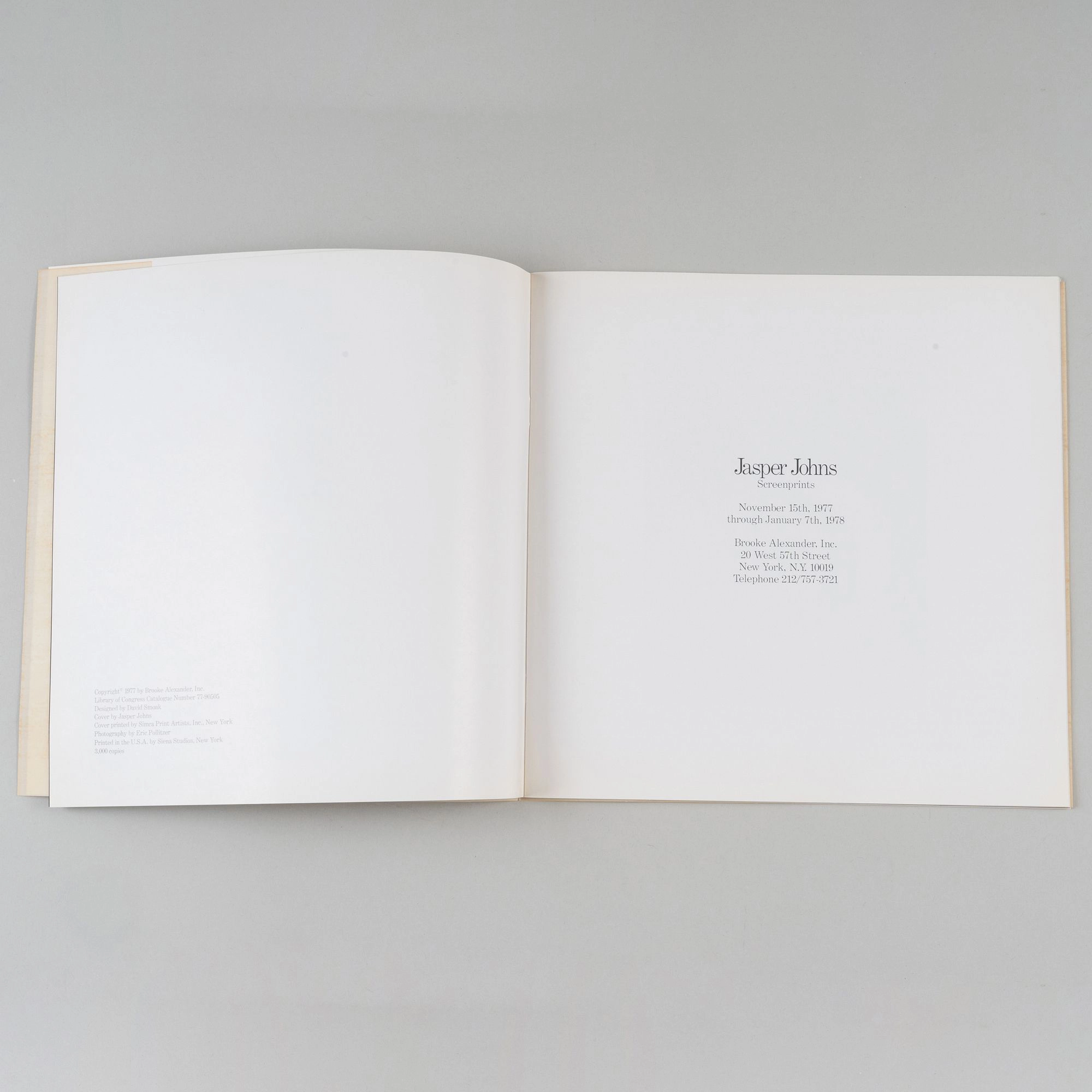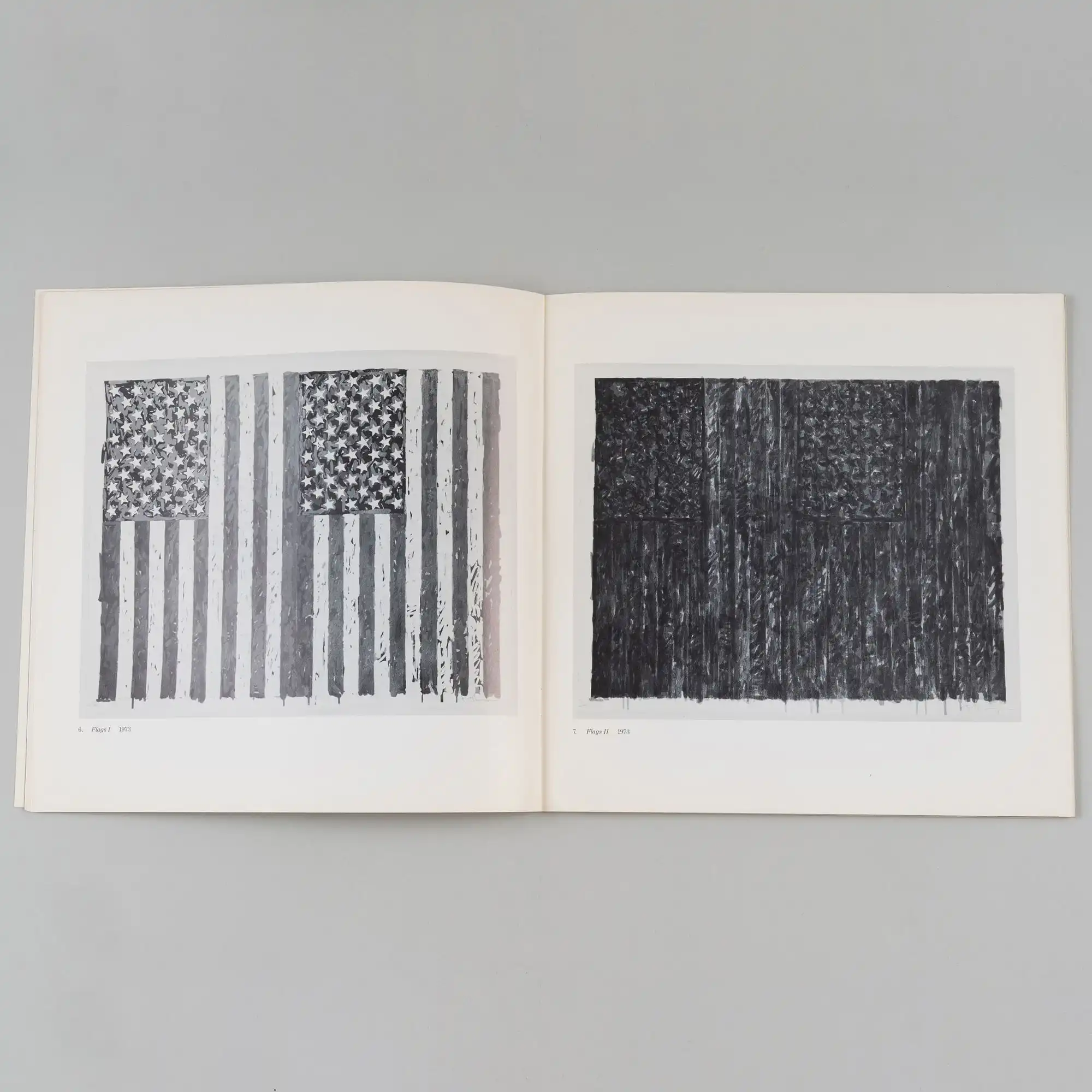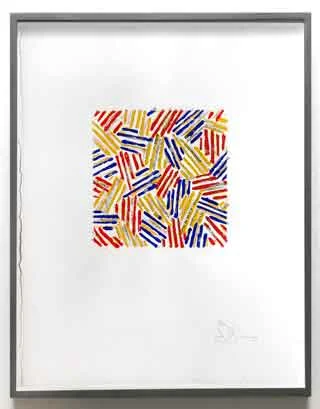Untitled (ULAE 186/S13), 1977
image: 9 1/2 x 9 1/2 inches
overall: 9 7/8 x 10 2/8 inches
frame: 15 5/8 x 15 5/8 inches
edition: 3000
unsigned as published
published by Brooke Alexander Editions, 1977
printed by Simca Print Artists, Inc., New York
Literature
Richard Field, The Prints of Jasper Johns 1960-1993: A Catalogue Raisonne, ULAE, New York, 1994, Catalogue Reference ULAE 186/S13, n.p., another impression reproduced.
Exhibitions
Brooke Alexander, inc., New York, Jasper Johns Screenprints, November 15, 1977-January 17, 1978, another impression exhibited.
The Museum of Contemporary Art, Los AngelesRolywholyover: A Circus for Museum by John Cage, September 12, 1993 – November 28, 1993, another impression exhibited.
The Menil Collection, Houston, Rolywholyover: A Circus for Museum by John Cage, January 14 - April 3, 1994, another impression exhibited.
Solomon R. Guggenheim Museum, New York, Rolywholyover: A Circus for Museum by John Cage, April 23–August 7, 1994, another impression exhibited.
Philadelphia Museum of Art, Philadelphia, Rolywholyover: A Circus for Museum by John Cage, June 4-July 30, 1995, another impression exhibited.
Art Tower Mito Contemporary Art Center, Tokyo, Rolywholyover: A Circus for Museum by John Cage, November 3, 1994 - February 26, 1995, another impression exhibited.
Selected Museum Collections
National Gallery of Art, Washington D.C.
Museum of Modern Art, New York
National Gallery of Art, Australia
Minneapolis Institute of Art, Minneapolis
Cleveland Museum of Art, Cleveland
Madison Museum of Contemporary Art, Madison
Museum of Fine Arts, Houston
Princeton University Art Museum, Princeton
San Jose Museum of Art, San Jose
Harvard University Art Museums, Cambridge
